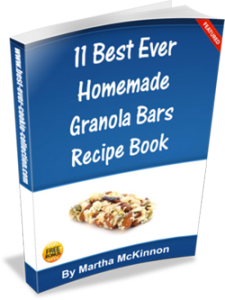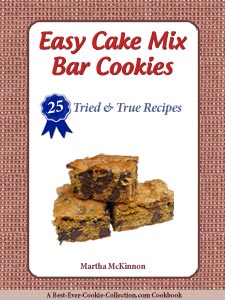Types of Flour
- Cookie FAQs |
- Making Perfect Cookies |
- Cookie Baking Conversion Charts |
- How to Melt Chocolate |
- Cocoa Powder |
- How to Make No Bake Cookies |
- Types of Flour
Guidelines and Tips on the Different Types of Flour
So you probably think that flour is flour, right? Wrong. There are many different types of flour available and some work better than others for baking your favorite cookies, bars and brownies.
The real difference between the different types of flour available has to do with the amount of protein contained in each flour. When mixed with any liquid, the protein in the flour will create gluten and it's the gluten that gives your cookies, bars and brownies there structure and texture.
Sometimes you will want more gluten and other times you will want less. You will be amazed at the different results you'll get with each cookie recipe, just based on which type of flour you use.
We hope these flour facts give you a basic understanding about each flour type and the courage to experiment and create your own special cookie and brownie recipes!
All-Purpose Flour, Bleached
This flour is a blend of both soft and hard wheats which makes it perfect for all different types of baking. Typically, the bleacing agents are only used in small amounts to whiten the flour and improve its baking results.
This is the most common flour used in cookie recipes and generally provides the best results.
All-Purpose Flour, Unbleached
This the same all-purpose flour without the bleaching agents. You will find that using unbleached flour gives a slight creamy color to your cookies because it is not as white as bleached flour.
Most commonly used in cookies and bars (where precise color is not important) and provides the best results.
Bread Flour
This flour is made from a special blend of wheat that is higher in protein than the all-purpose flours and is unbleached. This additional protein results in more gluten, and therefore more structure, so is favored by those baked goods that you usually make with yeast.
Bread Flour will work in your cookie and bar recipes, but you will end up with slightly tougher cookies because of the increased gluten.
Cake Flour
Cake flour is milled from soft wheat is most frequently used in pastries, biscuits and fine cakes.
Any cookies you make with cake flour will be very delicate and likely to fall apart rather easily.
Quick Mixing Flour
This is another all-purpose flour that is more grnaular, but mixes easily with liquid and will give the same results as regular all-purpose flour.
The cookie dough made with quick mixing flour may look or feel different, but it will provide you with the same results that you would get with all-purpose flour.
Self-Rising Flour
Self-rising flour is all-purpose flour that has baking powder and salt already added.
For best results, use only in cookie recipes that specify self-rising flour.
Wheat Blend Flour
This is a special blend of 100% hard-wheat flour and wheat bran. It's the wheat bran that will give you the same texture and taste you find in wheat bread.
Cookies made with wheat blend flour will be slightly more coarse and have a mild nutty flavor due to the wheat bran. Given this, you can directly substitute this for all-purpose flour.
Whole Wheat Flour
This wheat flour is produced from the whole kernel of wheat, including the bran, germ and endosperm.
Cookies baked with whole wheat flour will turn out ok. You will find that many cookie recipes use part whole wheat and part all-purpose flour which will give you a slightly nutty tasting cookie with a coarser texture. If you'd rather use only whole wheat flour, you should follow recipes that are developed for only whole wheat flour.
Please note:
Some cookie recipes will use cornstarch for part of the flour which results in fine cookies that are very tender. Just remember, cornstarch and flour are not equally interchangeable, so look for specific recipes that incorporate cornstarch.
Measuring Flour
All flour's today are pre-sifted, so you really don't have to sift your flour before using. To meaure your flour amount correctly, gently spoon it into dry measuring cups and then level with a spatula or knife. You shouldn't dip your measuring cup into the flour or tap the measuring cup to get the right amount because you'll end up with too much flour for your recipe. Using too much flour will make your cookies tough, dry and crumbly. If you don't use enough flour, your cookies will spread out and lose their shape.
Flour Shelf Life
You should store your flour in airtight containers and keep them in cool, dry locations. All-purpose (bleached and unbleached), bread flour, cake flour, and quick-mixing flours have a shelf life of about 15 months. Self-rising flour can be safely store for up to 9 months and your wheat blend and whole flours will keep for 6 to 8 months before spoiling.
If you won't be using all your flour quickly, you can safely store in resealable plastic zip-lock bags in the refrigerator or freezer for up to two years.
Keep in mind that the oils in wheat blend flour and whole wheat flour can quickly become ransid with a strong and unpleasant taste. Storing in the refrigerator or freezer will help slow this process.
Helpful Cookie Baking Supplies:
Back from Types of Flour to Making Brownies and Cookies
Back from Types of Flour to Best Ever Cookie Collection home







